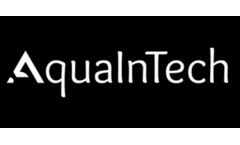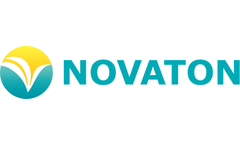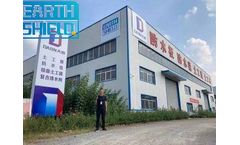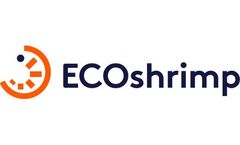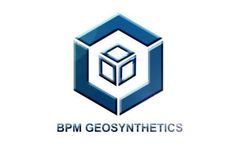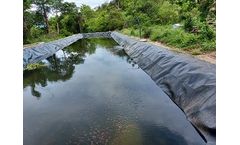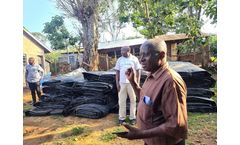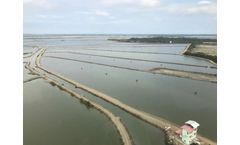Shrimp Farmers Articles & Analysis
53 articles found
In use in a dozen plus countries, by shrimp and fish farmers, it has been found to result in consistent outcomes provided adequate biosecurity measures are in place and farmers adjust their usage rates as the cycles progress. ...
The project with the Thuwal Fishermen’s Association is aiming at transforming wild-catch fishermen into sustainable farmers. The project will start with the construction of 20 modern and sustainable marine cages, operated with solar energy and with waste extractors to protect coral reefs. About 50 fishermen will be trained as of December 2021 to work on the new operations. ...
Fish Farming Ponds: Constructing large fish farming ponds for raising various species of fish, such as tilapia, salmon, catfish, or shrimp. Shellfish Farms: Establishing oyster or mussel farms using suitable infrastructure like floating cages or racks in coastal areas. Offshore Cage Farms: Creating net-cage systems in open water to cultivate fish like salmon or tuna. Aquaponics Systems: ...
The terms microbiome and microbiota are frequently confused with each other. The microbiota is a subset of the microbiome. It refers to the microorganisms that are present in each environment. The term microbiome refers to the total genome and gene products of all the bacteria, bacteriophage, fungi, protozoa, and viruses that are present in a specific environment. This can be in and on an ...
EHP is caused by a spore forming microsporidian, Enterocytozoon hepatopenaei. The disease is also known as hepatopancreatic microsporidiosisis (HPM). The spores are how the pathogen infects shrimp. When spores are ingested by consuming infected tissues (via cannibalism) and/or feces or indirectly through the water, they infect specific types of cells in the hepatopancreas and intestinal tract ...
It not only saves the workload of the farmers, but also saves the cost of breeding, increases the output of the shrimp Pond, and increases the income of the farmers. The application of HDPE Pond Liner in shrimp ponds is now prevalent in many countries, such as the Philippines, Indonesia, Malaysia, Singapore, and other Southeast ...
This appears to be the case for many of the shrimp viruses and could actually be for any virus that is present in stocks, whether pathogenic or not. ...
Select pellet feed or extruded feed? Farmers, pick pellet feed or extruded feed? When choosing feed, farmers should consider the characteristics of various aquatic types as well as feeding practices. Due to the fact that the habit of shrimps and crabs is to find food near the bottom, and afterwards eat the food slowly, so the food needs ...
The value of the crop at harvest minus the cost of producing the crop is the profit for the farmer. As with any business, profits are what sustain it. Shrimp farming, as a whole, is a slowly maturing multinational agrisector prone to fluctuations in output largely as a result of biosecurity lapses. Diseases are the bane of shrimp ...
At present, the aquaculture industry adopts a collectivized model for raising. It is conceivable that there must be a lot of fish and shrimp excrement in the water, and the water quality is bound to be poor. In the long run, this will definitely affect the groundwater resources of the surrounding environment. To avoid this from happening, you can lay an impermeable membrane around the pond to ...
What is HDPE Geomembrane Liner? What are the applications and advantages of HDPE Geomembrane? Why it can be used as a shrimp/fish pond liner? How to choose suitable items such as shrimp/fish pond liner? And how to find a reliable supplier? The following article is a detailed introduction for your inference to choosing geomembrane liners.What Is HDPE Geomembrane? HDPE geomembrane is a new type of ...
The quantities of shrimp farmed globally continue to increase. More than 5 million MTs of shrimp will be produced on farms in 2022, with some estimates as much as double this. ...
Indonesia is the world’s largest archipelagic State with some 17 508 islands (of which 6 000 are inhabited), and 54 716 km of coastline, and the world’s fourth most populous nation (247.5 million). In 2012, Indonesia’s fishery production reached approximately 8.9 million tonnes, of which inland and marine catch accounted for about 5.8 million tonnes and aquaculture 3.1 million ...
In recent years, the global market for seafood products, including fresh shrimp, has grown, alongside consumer awareness of and demand for sustainably-sourced produce. This has resulted in a shift from traditional pond culture of shrimp, to closed systems that are closer to market, feature enhanced biosecurity, have a minimal environmental impact, and result in improved shrimp production. A tale ...
Case StudyLocation- Indonesia Product – 0.5mm HDPE Impermeable Pond Liner Application- Fish pond IssueIndonesia is one of the world’s largest producers of aquatic products due to its location in fish rich waters and its long-standing fishing tradition. Due to the decreasing number of wild populations inhabiting the earth’s sea, Indonesia’s importance in the global market is further highlighted. ...
Fishery resources refer to the totality of economic animals and plants such as fish, shrimp, crabs, shellfish, algae, and marine animals with development and use-value. ...
Case Study: Location: Kenya Product:0.75mm HDPE Geomembrane Pond Liner Application: Shrimp Pond Project Status Quo: Kenya faces the Indian Ocean to the east, with many ports and pollution-free, suitable for the development of marine fisheries. To the southwest is Lake Victoria, which is the largest freshwater lake in Africa. Kisumu, an important town in the southwest, is an important fishery base ...
EHP is caused by a spore forming microsporidian, Enterocytozoon hepatopenaei. The spores are how it infects. When the spore is ingested, directly by consuming infected tissues or feces or indirectly through the water, it germinates by infecting specific types of cells in the hepatopancreas and intestinal tract. It uses the metabolic machinery of the cell to make more spores until the infected ...
Disease is a serious problem that consistently impacts shrimp farmers globally. Companies that claim to offer solutions without considering the nature by which pathogens enter production systems abound. ...
Aquaculture is growing at a greater rate globally than any other agribusiness sector. It is widely predicted that with 6 to 8% annual growth rate continuing well into the foreseeable future, aquaculture will offer good investment opportunities. However, just like any other endeavor, there are some very good reasons why what some see as a pot of gold at the end of the rainbow is empty and full of ...

